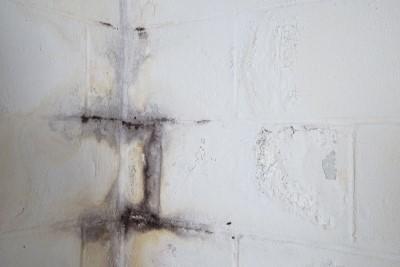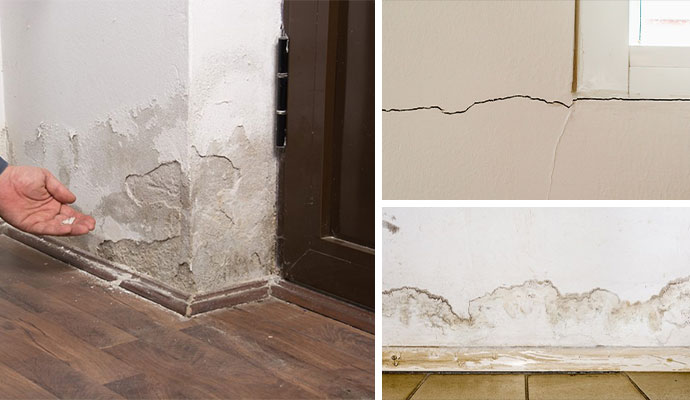How to Discover and Address Water Stains on Wall Surfaces
How to Discover and Address Water Stains on Wall Surfaces
Blog Article
Just about every person may have their own assumption on the subject of Water Stains on Walls.

Water spots on walls are not enjoyable to the eyes. Often it seems practically inevitable to experience water stains on wall surfaces in homes.
Homeowners living in humid areas constantly deal with the anxiety of water stains on walls. With all-round as well as precise information on the causes of water discolorations and also timely repair work procedures, you will certainly always be an action ahead of such occurrences.
3 Common Causes of Water Discolorations on Wall Surfaces
Contrary to common belief, water spots on wall surfaces do not always originate from bad building products. There are several reasons for water stains on wall surfaces. These consist of:
Poor Drain
This will stop water from leaking right into the wall surfaces. This links to extreme dampness that you notice on the wall surfaces of your structure.
The leading cause of damp wall surfaces, in this case, can be a poor drainage system. It can also result from poor monitoring of sewer pipes that go through the building.
Wet
When hot moist air meets with dry cold air, it causes water droplets to base on the walls of structures. When there is vapor from cooking or showers, this happens in washrooms and also kitchen areas. The water beads can stain the surrounding walls in these parts of your home and spread to various other areas.
Damp or condensation impacts the roofing system as well as wall surfaces of structures. When the wall surface is damp, it creates an appropriate environment for the development of fungi and also microbes.
Pipe Leaks
Most houses have a network of water pipes within the walls. This makes certain that the pipelines are faraway from the reach of damaging rats. It always raises the feasibility of such pipelines, as there is little oxygen within the wall surfaces. This inhibits rust.
Yet, a drawback to this is that water leakage impacts the walls of the building as well as triggers widespread damages. A dead giveaway of defective pipes is the appearance of a water stain on the wall surface.
Water Discolorations on Wall: Fixing Tips
Homeowners would normally want a quick fix when handling water discolorations. They would quickly recognize this is disadvantageous as the water spots recur. Below are a couple of handy ideas that will direct you in the fixing of water spots on wall surfaces:
Pro Suggestion
A houseplant in your house also raises its humidity. So, if your house is currently damp, you might want to introduce houseplants with marginal transpiration. An example of suitable houseplants is succulents.
Conclusion
Although nobody wants to have water spots on walls in their home, it can take place to the best of us. This short article gives you take advantage of, as you now know how to handle this problem if it does take place.
It is constantly best to recruit specialist services to aid deal with the damages in your house.
Sometimes it seems almost inevitable to experience water stains on wall surfaces in residences.
In contrast to preferred belief, water discolorations on walls do not always stem from inadequate structure products. There are numerous causes of water discolorations on walls. The water droplets can discolor the surrounding walls in these parts of your house and also spread to other locations.
Below are a couple of helpful pointers that will certainly lead you in the fixing of water spots on walls:
CHECKING FOR WATER DAMAGE
Water damage can be costly, and it may begin before you even notice the first signs of trouble. Water damage can cause mold and mildew in your walls and floors, which can create an abundance of health concerns for your family. It can also lead to costly repairs of various appliances and general home fixtures. To avoid the pricey consequences of water damage, here are Warner Service’s top 5 places you should check:
The walls – The easiest place to spot the beginnings of water damage is on the walls and ceilings of your home. If water damage is present, there will most likely be water stains, especially around the windows and doorframes, and/or cracks in the drywall. If a stain looks unusual (discolored to brown, black or gray, raised texture), has a swollen appearance or is soft to the touch, contact a professional immediately. The pipes – To avoid water damage, consistently check the pipes in your kitchen (especially the dishwasher and ice maker), bathrooms, laundry room (specifically washing machines) and basement for corrosion, leaks and water stains. Pay special attention to where the pipes connect in your home and the location of caulking around the bathroom fixtures, including toilets, sinks, showers and tubs. Missing or loose caulking and grout could be signs of leaking water. This seepage can also quickly cause mold and rust, so double check your water heater and tank for wet spots on the floor. The floor – Water damage is very easy to spot on the floor. Look for any warping or buckling of the material, especially in the basement. If your home has wood flooring, look for bright white or dark stains. If your home has carpeting, keep it dry and clean. A damp carpet that smells of mold could cause water damage and health problems. To avoid this, consider installing floor pans under your appliances to help prevent damages from small, slow and undetected leaks. The basement and attic – If your basement or attic smells odd check for mold and mildew around the area, especially the valley where the roof meets. While you are inspecting those areas, check for wall cracks, floor stains, rust and dampness in the insulation. If you live in a colder and/or rainier climate, perform routine checks for water damage from melting snow or ice and rain. The exterior – Check the roof for damaged flashing and missing, cracked or curled shingles. There should also be no standing water anywhere outside your home. This could be caused by puddles, leaky rain gutters or hoses, poor drainage, or short gutter spouts. Invest in a sump pump system or water flow monitoring system, and perform routine maintenance on these outdoor appliances to avoid indoor water damage.

Do you appreciate more info about ? Place a comment further down. We'd be delighted to find out your thoughts about this entry. Hoping that you come back again later on. Do you know another individual who is intrigued by Indicators of Water Damage Behind Walls? Take a moment to share it. I praise you for your time. Please stop by our site back soon.
Overflow? Seek assistance. Report this page